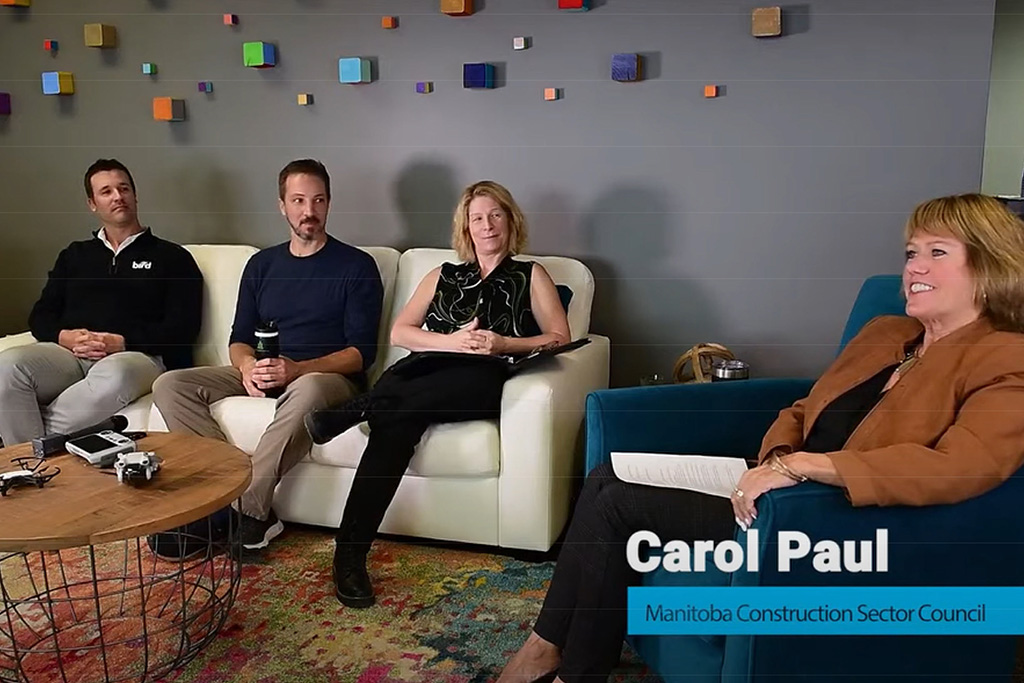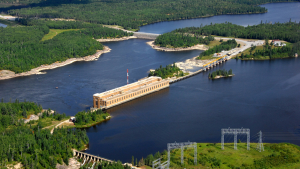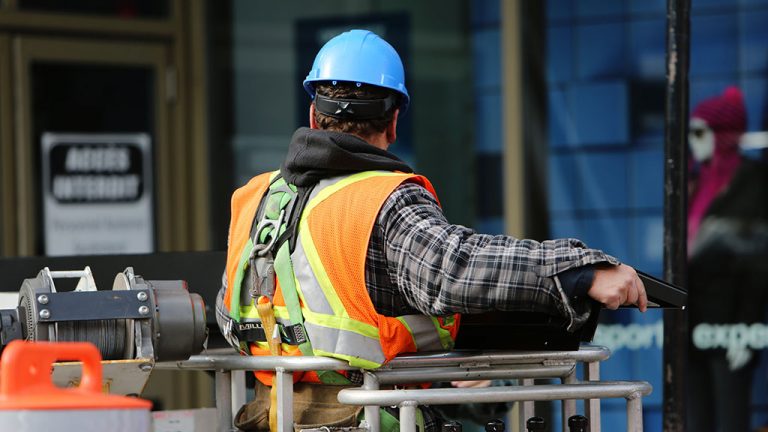The use of drones in construction is destined to grow in future as the aerial technology allows companies to more safely monitor and track progress on a building site in a way that was before never deemed possible.
That’s one of the messages conveyed by panel of subject matter experts who participated in an hour-long discussion recently on the growing use of drone technology in Manitoba’s construction industry. The event was hosted by the Manitoba Construction Sector Council and led by executive director Carol Paul.
Panellists noted drones, with their real-time data recording and unique advantage, can improve efficiency, cut costs and streamline workflows, while also offering myriad applications to help improve quality.
Nolan Klassen, sales manager at Lewis Instruments Ltd. in Winnipeg, says the company began its foray into the use of drone technology around 2014 when the flying robots were relatively new in construction.
As a large supplier of survey equipment supplies and products, he notes the company felt it was critical to be at the leading edge of the curve so it could help contractors get into drone technology at the outset.
“When trends change in technology, it’s a responsibility of a company like ours to stay with those trends, and especially at an early stage, so that we can help companies that want to get into this right from the get-go.”
Since then, the use of drones has grown by leaps and bounds and the scope of work being done has expanded.
“In 2014, you could probably count on your hand how many companies were getting into it,” Klassen remarked. “But I would say there’s now at least dozens of companies across the province using drones.”

In the early days, contractors would hire outside companies to operate the drones, but they are now hiring their own pilots and buying equipment as it saves money and provides immediate access to data, he says. Operations that took several days or a week for a surveyor with a GPS rover can be done in an hour.
Mark Bruskiewicz, operations manager at Bird Construction, says the drones are used to do investigative work and look at areas that are difficult to reach.
“We build some unique buildings that present challenges where sometimes you need rope access or intricate scaffold systems. Drones give us the ability to get into these areas easily and provide some inspections.”
For example, Bird had to examine a bridge that was difficult to access and required some work, and was able to leverage the technology of drones to get into the areas without erecting complex work platforms.
Bruskiewicz anticipates drones will become more prevalent on sites as improvements are made to the technology.
“If you’re not adapting your technology, you’re going to get left behind,” he says. “There’s a tremendous amount of efficiency that comes with this kind of technology. I think that’s probably the biggest pro.”
Lori Crandell, CEO of the New Home Warranty Program of Manitoba, says at this point there has been limited use of drone technology in the residential sector but the possibilities are endless.
“Drone technology really hasn’t reached the new home construction industry in way that is reaching all the ways that would be applicable,” she says. “They’re using drones occasionally for marketing but that’s kind of where it ends. They see how a drone works and they see some of the potential but that’s kind of where the limitations are right now.”
Crandell pointed out a laundry list of tasks that could be done using drones. Examples include security, soil surveys, inspections of hard-to-reach places and building roofs. Drones could also look for water leaks and detect if there might be problems with insulation in a home by using instruments to detect heat loss.
“In an attic, we can have situations where the insulation becomes displaced or maybe it hasn’t been put up properly at all, (perhaps) missing a vapour barrier or improper installation. So, that would be one application.”
At a worksite with multiple homes on a parcel of property, meanwhile, doing a flyover once a day with a drone would enable the builder to see how work on the roofs is progressing, Crandell says.
“The next steps are unlimited. There is so much we could do. But we’re going to have to wet the appetite of the builders and provide them with the answers to some of their questions,” she says.
“Can these drones do these things for me and is it efficient? Can it be done cheaper? Is it reliable? Can I crunch the data? Can I understand the data? Am I going to have to do this in-house? We have a roadblock of a whole bunch of questions we need answered before we can determine what the next steps really are.”
Roof inspections are a prime example of the benefits of using a drone, Crandell says.
“There’s really no roofing consultants that will go out and provide a review of the roof that we could use to make an assessment of what kind of damage is there and what kind of repairs are needed. In that case, you’d generally have to hire a roofer which is actually a conflict of interest because they are there to make money by repairing the roof.”











Recent Comments
comments for this post are closed